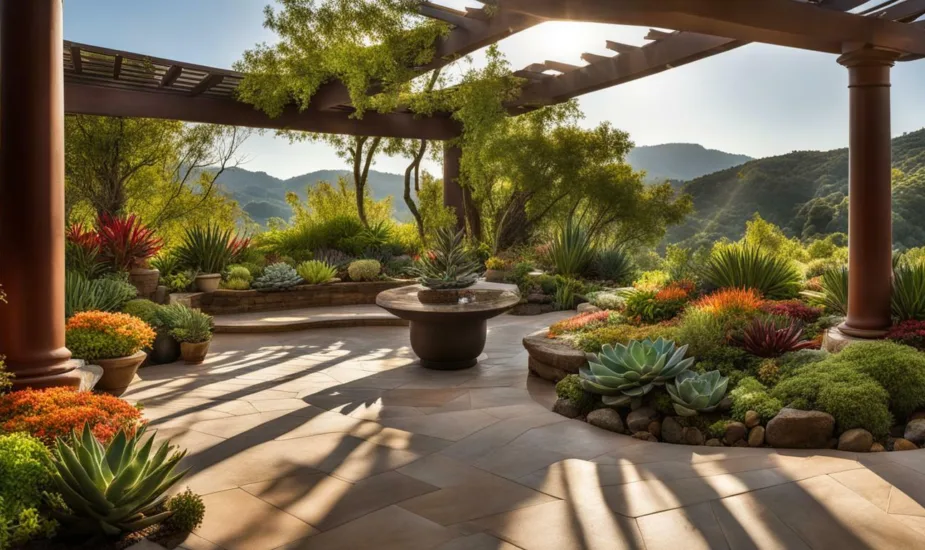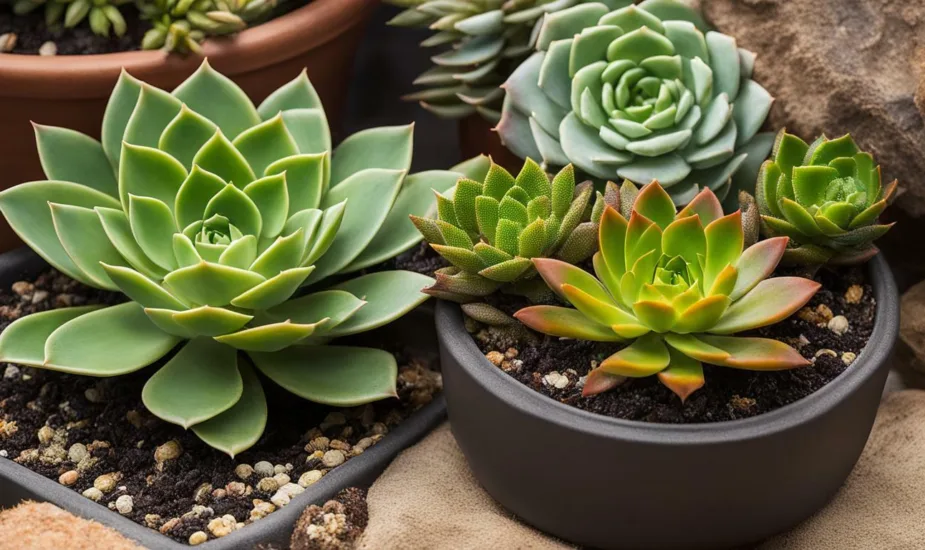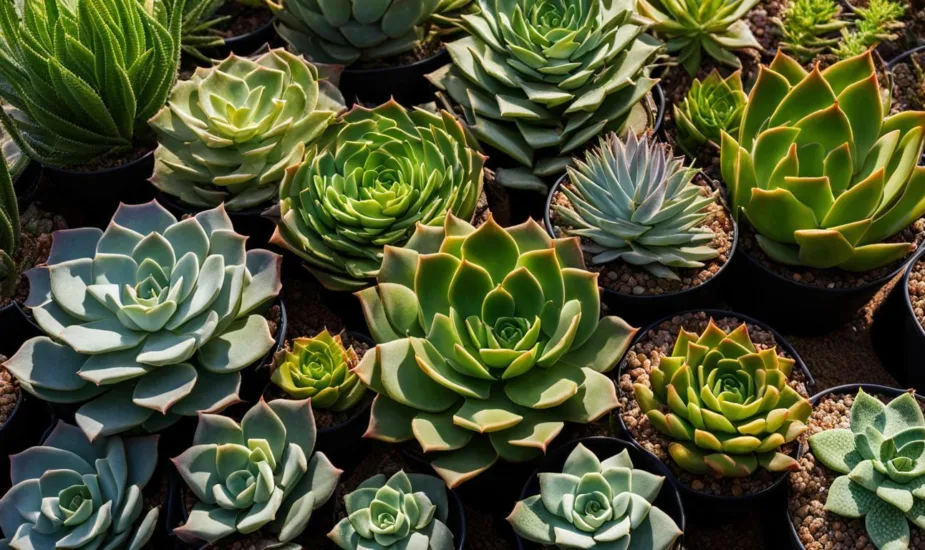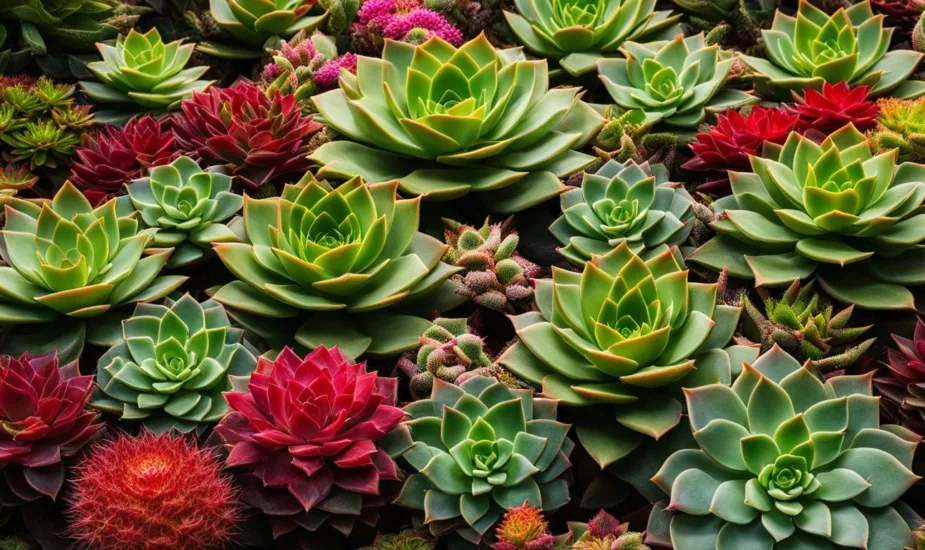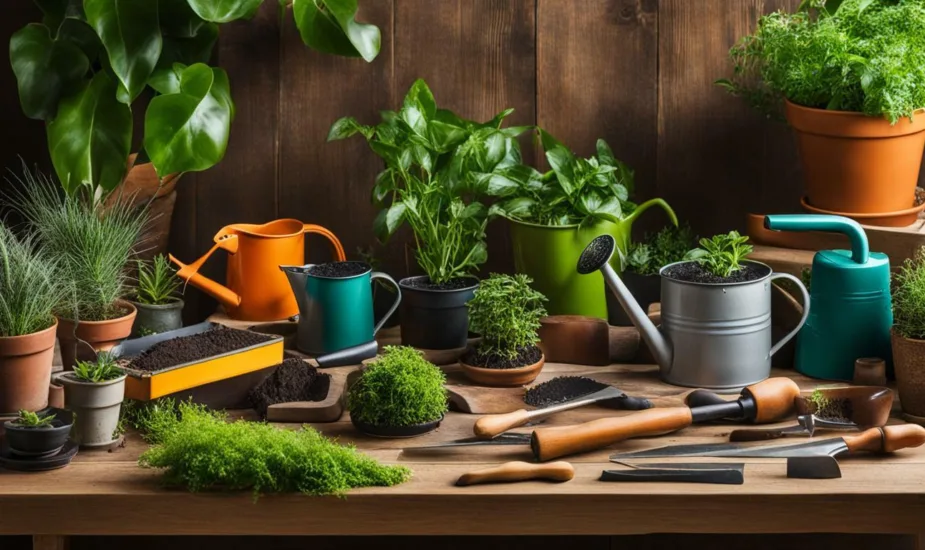The Ultimate Vertical Gardening Kit: Your Vertical Paradise Awaits
Vertical gardening is a popular and innovative technique that allows you to maximize your gardening space by arranging plants in a vertical manner. Using a variety of methods, such as trellises, container planters, hydroponic living walls, and pallet planters, you can create a beautiful and lush garden even in limited spaces.
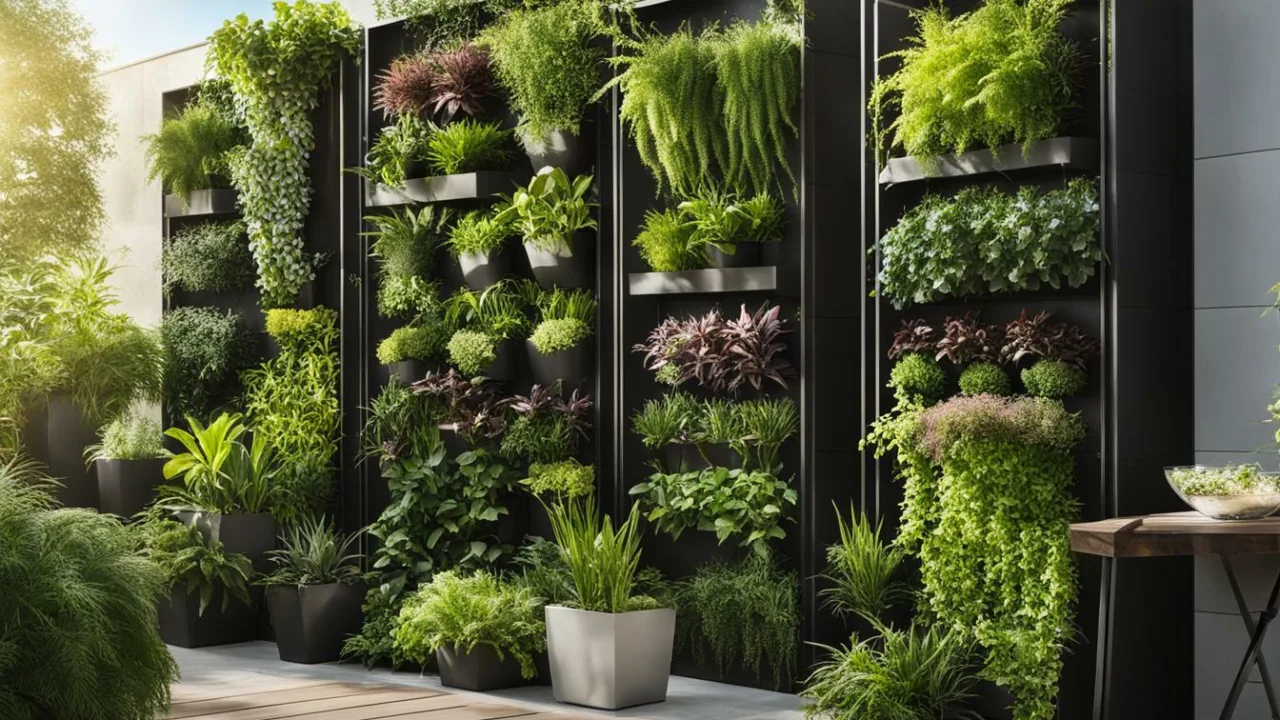
DIY vertical gardening is also possible, making it accessible to anyone who wants to try it out. An indoor vertical garden is another option for those who live in apartments or have limited outdoor space.
Key Takeaways:
- Vertical gardening is a technique that allows for maximizing limited gardening space.
- There are various methods for vertical gardening, including trellises, container planters, hydroponic living walls, and pallet planters.
- DIY vertical gardening is accessible and indoor vertical gardening is an option for those with limited outdoor space.
- Using a vertical gardening kit can help create a beautiful and efficient vertical garden.
Using Trellises for Vining Plants
There are various ways to create a vertical garden, and one popular method is using trellises for vining plants. Trellises are frames made to support the growth of climbing plants and can be constructed from various materials such as wood, wire, and metal. Planting vines at the base of the trellis and weaving them through the mesh helps to train them to grow upward.
The advantages of using trellises for vining plants are abundant. One of the primary benefits is that it produces higher quantities of high-quality fruits and veggies. Another advantage is that it prevents problems with pests and diseases, as vining plants grown on trellises are less susceptible to soil-borne pests and pathogens. Additionally, utilizing trellises maximizes garden space, which is especially advantageous for those who have limited outdoor space. Finally, using trellises allows the garden to be accessible to people of all ages and abilities, as it requires less bending and kneeling than traditional gardening.
However, trellises may require maintenance and occasional replacement of building components. Some recommended vining plants for trellises include blackberries, grapes, raspberries, clematis, honeysuckle, morning glories, nasturtium, passion flower, star jasmine, cucumbers, melons, and pole beans.
Vertical garden planters and pots can also be used in conjunction with trellises for added versatility. Vertical garden systems are another option in this category that can be used to simplify the process and enhance the result, with vertical garden pots being very popular among gardeners.
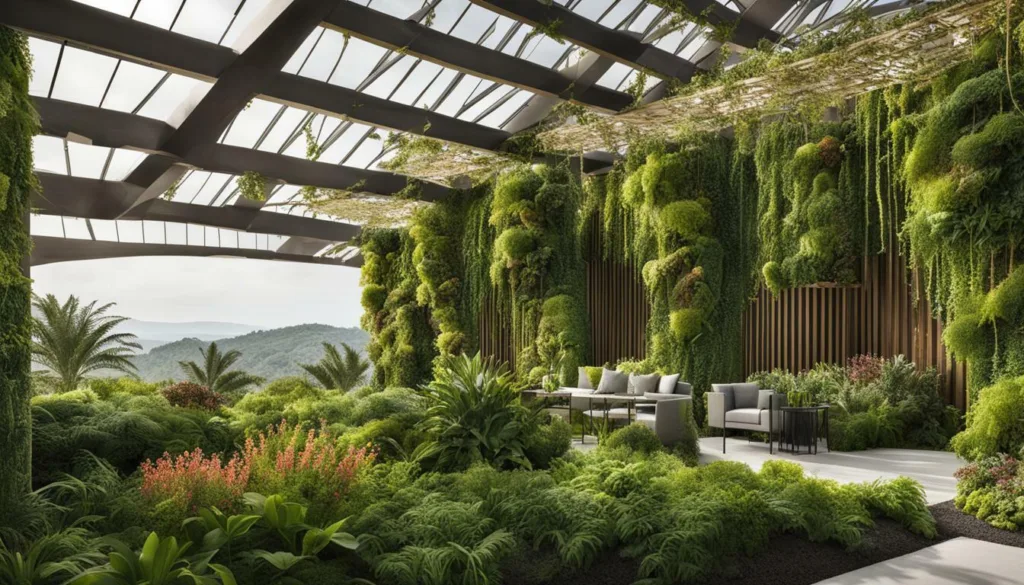
Creating Green Walls with Container Plants
Another option for vertical gardening is to create green walls of container plants. This trend has become increasingly popular as people look for ways to add greenery to limited spaces. Container planters are a versatile way of growing vertical gardens, as they can be arranged in various ways, attached to walls or freestanding structures, and offer a multitude of plant options.
Container planters offer several benefits, including easy setup, no need for weeding, and easy individual plant care. They also add beauty and interest to small spaces by providing a focal point and making a statement. Some popular plants to grow in container planters are citrus fruits, alpine strawberries, basil, and bell peppers, as they thrive in warm weather and can be easily grown in small spaces.
Hydroponic living walls are another option for creating green walls. These vertical gardens use nutrient-rich water instead of soil and require little upkeep. Hydroponic gardening offers many benefits, including increased property value, reduced pollution, and no weeding. Some suitable plants for hydroponic living walls are currants, impatiens, chives, and lettuce, as they can benefit from the nutrient-rich water and grow well in a vertical environment.
Trellises can also be used to create green walls by providing support for climbing plants. These structures offer a classic and elegant way of growing vertical gardens and can add visual interest to any small space. Trellises are particularly suitable for climbing plants like grapes, morning glories, and pole beans, as they allow these plants to grow upwards and conserve space.
Overall, creating green walls with container plants is a versatile and attractive way to add greenery to small spaces. It can help turn balconies and small gardens into outdoor paradises and provide a haven for relaxation and enjoyment. To get started with vertical wall gardening, it’s important to have the right vertical gardening supplies, including pots, soil, and a watering system.

“Vertical gardening with container plants is a versatile and attractive way to add green to small spaces and make them into outdoor paradises.”
Hydroponic Living Walls: Advanced and Efficient Gardening
For those looking for a more advanced and efficient method of vertical gardening, hydroponic living walls are an ideal option. This technique involves growing plants without soil and using nutrient-rich water instead. Hydroponic gardening systems are a popular choice for vertical gardens because they require less maintenance than traditional gardening methods, and can produce a wide variety of fruits, flowers, herbs, and vegetables.
Hydroponic vertical gardens allow plants to grow vertically, making them an excellent option for gardeners with limited space or those who want to create a unique and eye-catching green wall. Hydroponic gardening systems can be used with a variety of plants, including leafy greens, tomatoes, and strawberries. They offer several advantages over traditional gardening methods, including increased property value, reduced stress and anxiety, lowered energy bills, reduced pollution, and no weeding necessary.
Maintaining hydroponic vertical gardens involves checking on plants every few days, checking for pests, adding water as needed, changing the nutrient basin, and watching out for root rot. While setting up a hydroponic vertical garden can be more expensive than other gardening methods, the benefits make it an investment worth considering. The cost of these living walls can range from $500 to $2,000, depending on size, difficulty, and plant selection.
While hydroponic living walls may seem daunting at first, with proper research and planning, gardeners can create a beautiful and efficient vertical garden that will thrive for years to come. Not only do they offer a space-saving solution for gardeners, but they also provide numerous benefits, including maximizing garden space, increasing property value, and promoting overall well-being.

“Hydroponic vertical gardens allow plants to grow vertically, making them an excellent option for gardeners with limited space or those who want to create a unique and eye-catching green wall.”
Upcycling with Pallet Planter Gardens
Upcycling with pallet planter gardens is a creative and sustainable way to transform limited garden space into an outdoor paradise. Vertical gardening is a popular technique that involves arranging plants vertically on trellises or other structures. Trellises, typically made of wood, wire, or metal, provide support for climbing plants and maximize garden space. They also improve accessibility and prevent problems with pests and diseases. The best vining plants to grow on a trellis include fruits like blackberries, grapes, and raspberries, flowers like clematis and honeysuckle, herbs like nasturtium and star jasmine, and vegetables like cucumbers, melons, and pole beans.
Another option for upcycling in the garden is using container planters to create green walls. Container planters can be affixed to fences, walls, or freestanding structures, allowing for easy customization and plant rotation. This type of vertical garden system is ideal for growing perennials, herbs, flowers, and even some fruits and vegetables. Maintenance for container planters includes regular watering, fertilizing, and deadheading. The cost of building a living wall with container planters depends on factors like weight, size, materials, and whether you choose to buy a ready-to-go system or build your own.
Hydroponic living walls provide another option for upcycling and vertical gardening. Hydroponics involves growing plants in nutrient-rich water instead of soil, reducing the need for traditional gardening resources. Vertical gardens using hydroponics have numerous advantages, including reduced soil-borne diseases, lower energy bills, and the ability to grow plants in areas with limited space. The maintenance for hydroponic gardens is minimal, with the need to check on plants every few days and change the nutrient basin monthly. The best plants to grow in hydroponic living walls include fruits like currants and strawberries, flowers like impatiens and petunias, herbs like chives and sage, and vegetables like bell peppers, lettuce, and spinach.
Last but not least, if you’re into upcycling and want a more budget-friendly option, you can consider building a pallet planter garden. Pallets can be transformed into vertical gardens by attaching pots or planter boxes to the slats or directly growing plants inside. Pallet planters are especially suitable for growing herbs close to the kitchen. The advantages of pallet planter gardens include environmental benefits and ease of assembly. Pallets can be acquired for free or at a low cost, making this upcycling project accessible to many.

Overall, upcycling with pallet planter gardens is a creative way to incorporate vertical gardening while also reducing waste and staying mindful of the environment. Whether you choose to use trellises, container planters, hydroponics, or pallets, there are options to fit any budget and level of experience. So don’t be afraid to get creative and transform your garden into an upcycled paradise!
Section 6: Conclusion
In conclusion, vertical gardening is a fantastic way to maximize your gardening space and create a stunning outdoor paradise. With the right vertical garden kit, you can easily create a beautiful and functional vertical garden, whether you want to grow herbs, flowers, or vegetables. Vertical gardening is also ideal for those with limited space, as it allows you to utilize vertical surfaces to create a lush garden without taking up valuable ground space.
Vertical gardening provides numerous benefits, including better air quality, increased biodiversity, and improved mental health. It’s also a great way to reduce your carbon footprint and contribute to a greener environment. Whether you’re a seasoned gardener or just starting out, vertical gardening is a fun and rewarding hobby that can help you connect with nature and enjoy the fruits of your labor.
Investing in a quality vertical garden kit is essential to ensuring your success with this type of gardening. Look for kits that are durable, easy to use, and come with all the necessary components for creating a thriving vertical garden. By following the tips and techniques outlined in this article, you can create your own vertical paradise and enjoy the benefits of vertical gardening for years to come.
FAQ
Q: What is vertical gardening?
A: Vertical gardening is a technique that maximizes gardening space by arranging plants in a vertical manner, allowing you to create a stunning garden even with limited ground space.
Q: What are the different methods of vertical gardening?
A: There are several methods of vertical gardening, including using trellises for vining plants, creating green walls with container plants, utilizing hydroponic living walls, and upcycling with pallet planter gardens.
Q: What are trellises and how do they work in vertical gardening?
A: Trellises are frames adorned with mesh lattice that provide support for climbing plants. They can be affixed to walls or left freestanding to lean against structures, allowing vining plants to grow upward and maximize garden space.
Q: How do container plants work in vertical gardening?
A: Container plants are affixed to fences, walls, or freestanding structures, allowing you to grow a variety of plants. They provide flexibility and easy maintenance, making them a great choice for vertical gardening.
Q: What are hydroponic living walls and how do they work in vertical gardening?
A: Hydroponic living walls involve growing plants in nutrient-rich water instead of soil. They can be created using various structures and offer numerous benefits such as reduced soil-borne diseases and lower energy bills.
Q: How can I upcycle pallets for vertical gardening?
A: Pallets can be used as planters by placing pots or planter boxes inside them or directly growing plants in the pallet itself. This budget-friendly option adds a touch of creativity and sustainability to your vertical garden.
 Little Garden Tips
Little Garden Tips




